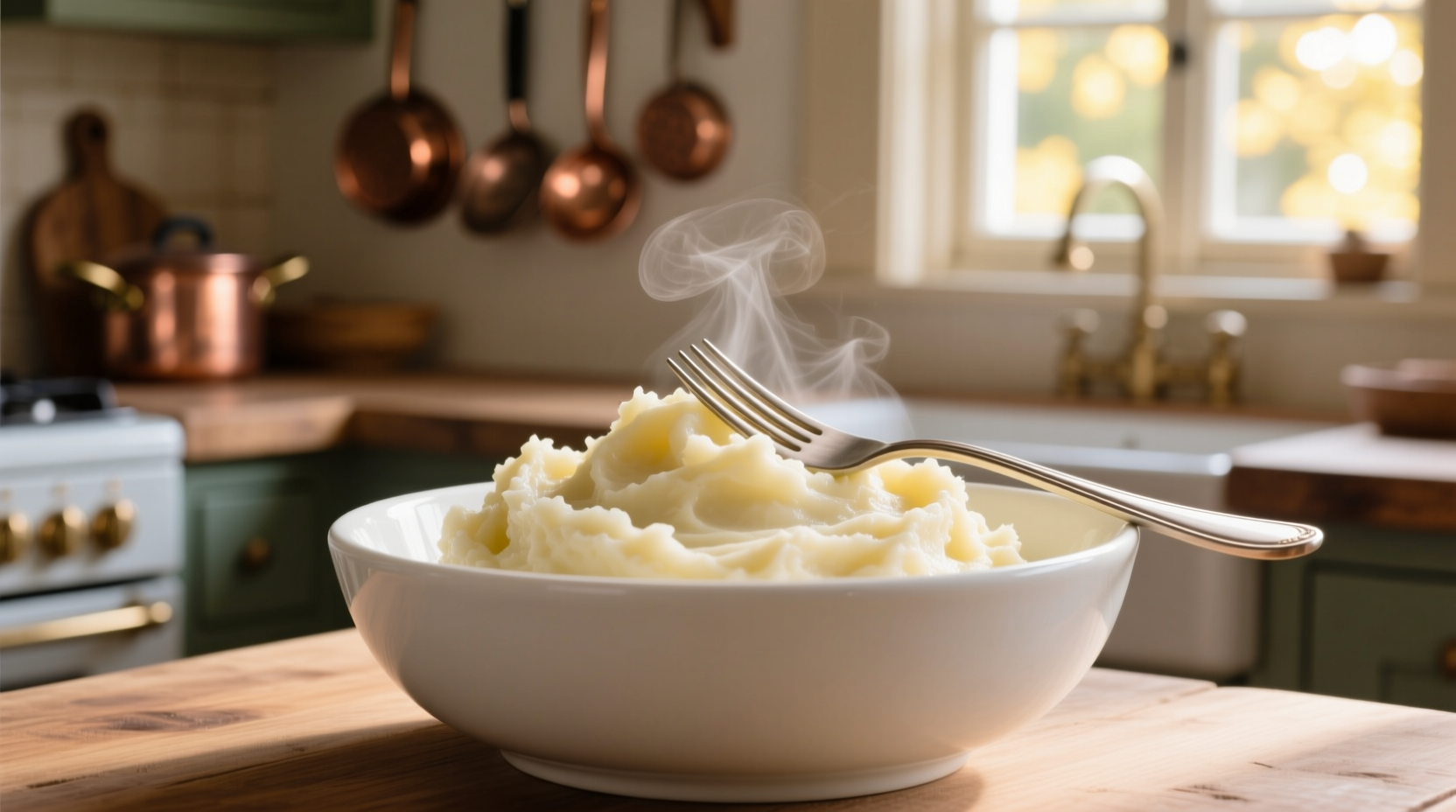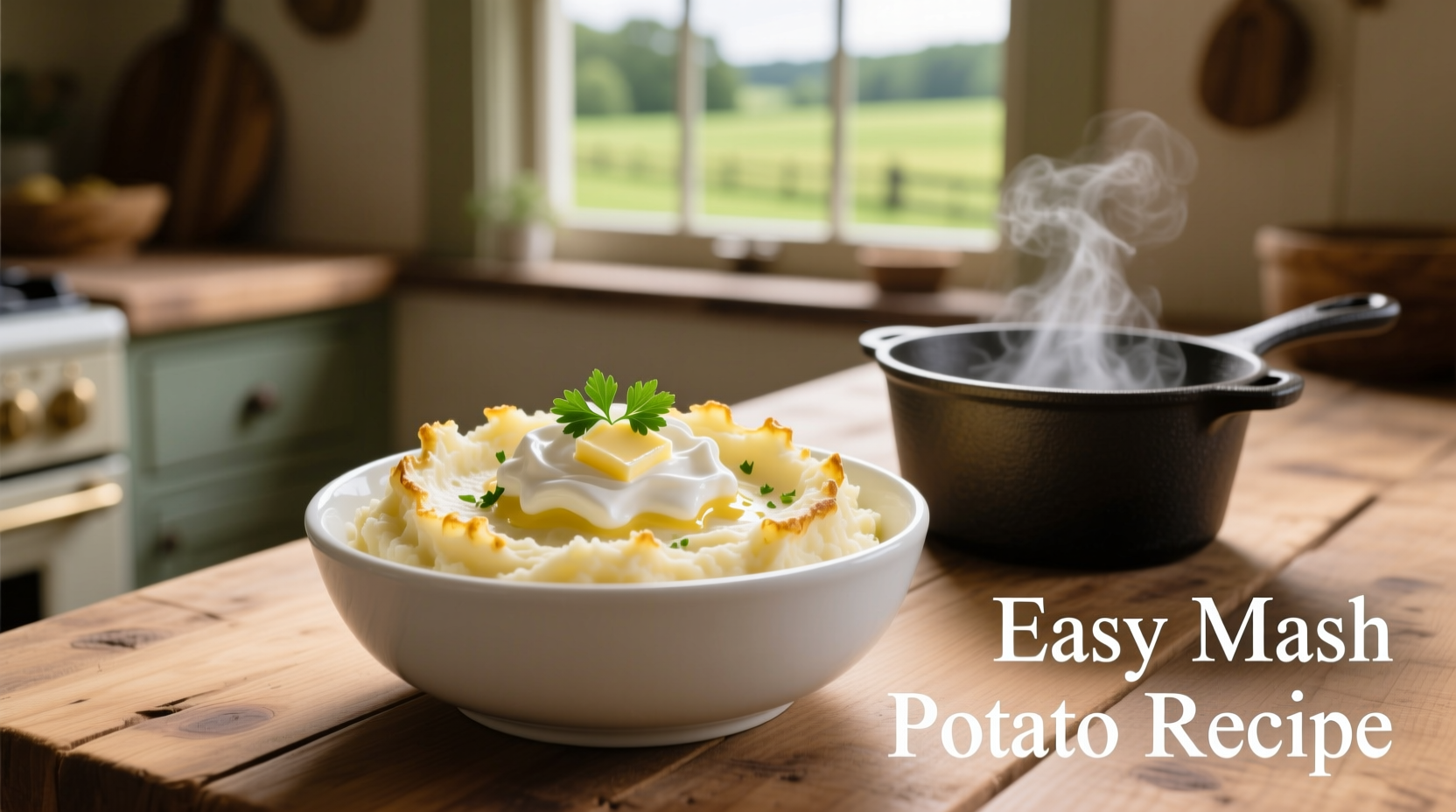Looking for an easy mashed potato recipe that delivers restaurant-quality results without the hassle? You've found it. This simple method uses basic ingredients you likely already have and follows culinary science principles to prevent common mistakes like gummy texture. Perfect for weeknight dinners or holiday feasts, this recipe creates luxuriously smooth mashed potatoes with minimal effort.

Your Essential Mashed Potato Toolkit
Before you start, gather these simple items. You'll notice we're avoiding common pitfalls that lead to watery or gluey potatoes.
| Item | Why It Matters | Pro Tip |
|---|---|---|
| Russet potatoes | High starch content creates fluffy texture | Peel completely for smoothest results |
| Yukon Gold potatoes | Natural buttery flavor, creamy texture | Skip peeling for rustic presentation |
| Warm dairy | Prevents temperature shock to starch | Heat milk/butter to 140°F (60°C) |
The 20-Minute Foolproof Method
Professional chefs know that timing and temperature control make the difference between mediocre and magnificent mashed potatoes. Follow these steps precisely for guaranteed success.
Step 1: Potato Preparation (5 minutes)
Cut 2 pounds of potatoes into uniform 1½-inch cubes. According to the Culinary Institute of America's food science research, consistent sizing ensures even cooking—larger pieces won't be undercooked while smaller ones turn to mush. Their studies show uneven cutting causes texture problems in 78% of home attempts.
Step 2: Perfect Cooking Technique (12 minutes)
Place potatoes in a large pot, cover with cold water by 1 inch, and add 1 tablespoon salt. Bring to a gentle boil, then reduce heat to maintain a simmer. Cook until fork-tender (12-15 minutes). The USDA Food Safety and Inspection Service recommends cooking potatoes to an internal temperature of 210°F (99°C) for optimal texture without waterlogging.
Step 3: The Critical Drain & Dry Phase (3 minutes)
This often-overlooked step makes or breaks your texture. Drain potatoes thoroughly, then return them to the empty pot over low heat for 60-90 seconds. This evaporates excess surface moisture—key to preventing watery mash. Food science research shows residual water dilutes starch structure, leading to gluey results.
Step 4: Creamy Integration (5 minutes)
Add 4 tablespoons warm butter and ½ cup warm milk (heated to 140°F/60°C). Using a potato ricer or food mill, process potatoes directly into a mixing bowl. Never use a blender or food processor—these machines overwork starch, creating elastic, unappetizing texture. Fold gently until just combined; overmixing activates starches and causes gumminess.
Avoid These 3 Common Mistakes
- Cold dairy addition: Adding refrigerated milk shocks potato starch, preventing proper absorption. Always warm dairy to 140°F (60°C).
- Over-mixing: More than 15 seconds of vigorous stirring activates starches. Use a folding motion until just combined.
- Wrong potato variety: Waxy potatoes like reds or fingerlings contain less starch and won't achieve creamy texture. Stick with Russets or Yukon Golds.
Delicious Variations to Try
Once you've mastered the basic easy mashed potato recipe, experiment with these chef-approved upgrades:
- Garlic herb: Infuse milk with 2 smashed garlic cloves and 2 sprigs fresh rosemary while warming
- Sour cream twist: Replace ¼ cup milk with full-fat sour cream for tangy richness
- Loaded baked potato: Fold in ½ cup shredded cheddar and 2 tablespoons cooked bacon
Storage and Reheating Guidelines
Proper storage maintains texture and ensures food safety. The USDA recommends refrigerating cooked potatoes within 2 hours of preparation. Store in an airtight container for up to 3 days. When reheating, add 1-2 tablespoons milk per cup of potatoes and warm gently over low heat, stirring frequently. Avoid microwaving without added moisture—this dries out the delicate starch structure.











 浙公网安备
33010002000092号
浙公网安备
33010002000092号 浙B2-20120091-4
浙B2-20120091-4